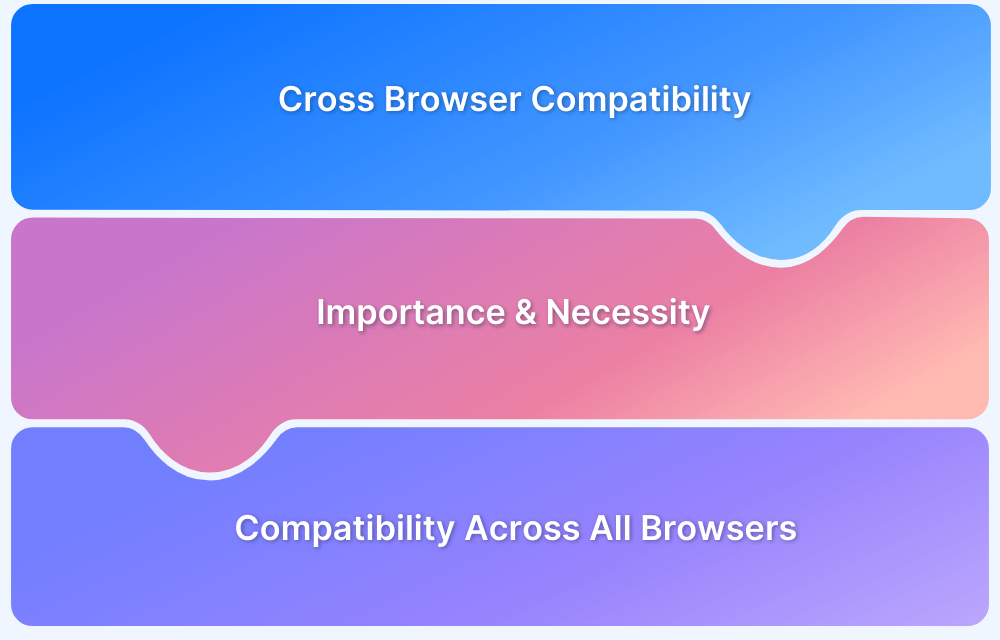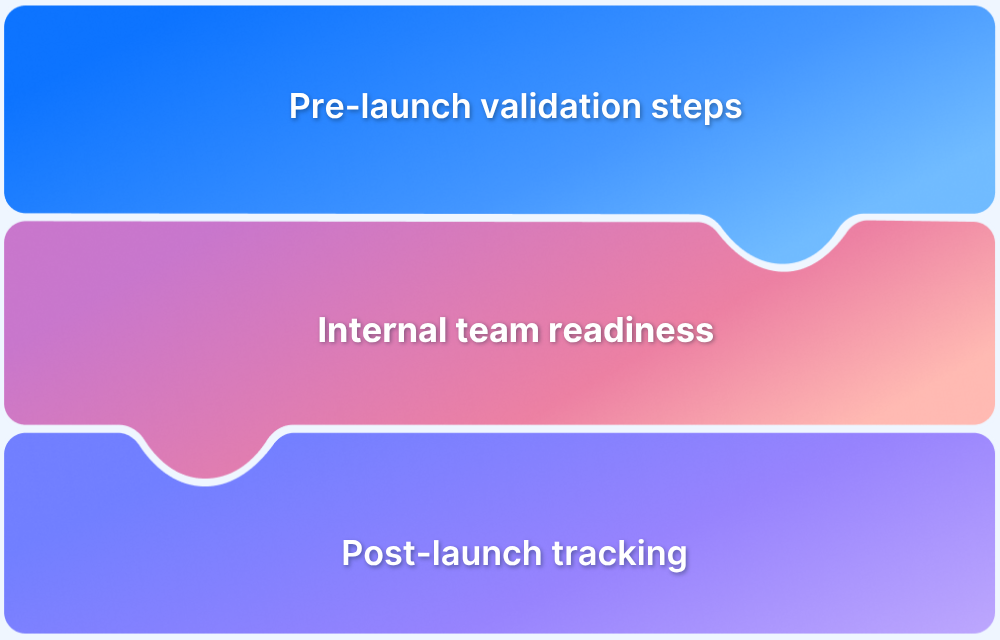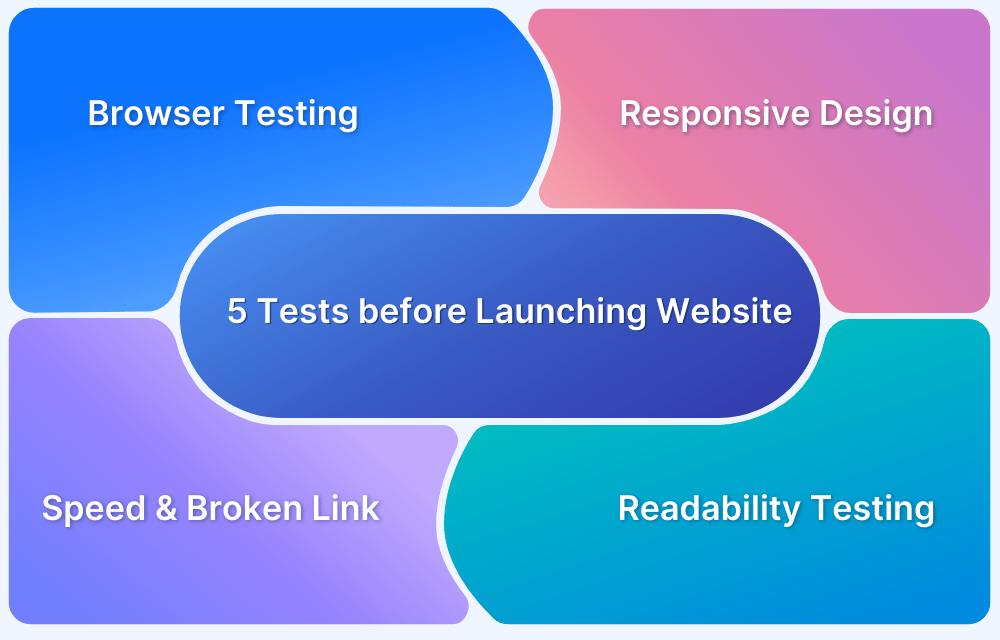Top 17 Website Launch Checklist: The Essentials
By Shreya Bose, Community Contributor - December 3, 2024
Regarding websites, customers expect advanced features, great visuals, and flawless performance. This pressures developers to meet these requirements and deliver quality code faster.
This article offers a website launch checklist to help developers, testers, and designers ensure a smooth and error-free website release.
- What is a Website Launch Checklist?
- Why should you have a Website Launch Checklist?
- 10-Step Website Pre-Launch Checklist
- 1. SSL Certificate Setup and Functionality
- 2. CMS Updates
- 3. Data Backup Solution
- 4. Analytics Solution Finalization and Integration
- 5. Content Readiness and Review
- 6. Page-by-Page Content Verification
- 7. XML Sitemap Generation and Verification
- 8. Meta Titles and Meta Descriptions
- 9. Robots.txt File Setup
- 10. Legal Compliance Verification
What is a Website Launch Checklist?
A Website Launch Checklist is a detailed guide used to review and confirm that every aspect of a website is ready before going live.
It covers key areas such as design, functionality, content, SEO, and technical setup to ensure the site is fully prepared for public access. This checklist is a final quality assurance step to catch any issues or oversights.
Why should you have a Website Launch Checklist?
Having a Website Launch Checklist ensures a smooth and error-free launch.
It helps identify and fix potential problems, such as broken links, missing content, or performance issues before users encounter them. This proactive approach enhances user experience, boosts credibility, and prevents costly downtime or errors after launch.
10-Step Website Pre-Launch Checklist
Ensure your website is launch-ready with this pre-launch checklist for a smooth user experience.
1. SSL Certificate Setup and Functionality
- Confirm that your SSL certificate is properly installed and configured for your website.
- Test the HTTPS protocol to ensure all pages load securely without any errors.
- Redirect HTTP pages to their HTTPS counterparts to avoid duplicate content issues.
2. CMS Updates
- Ensure your Content Management System (CMS) is up to date with the latest version.
- Update all plugins, themes, and extensions to their most recent, stable versions.
- Verify compatibility between the updated CMS and all installed plugins.
3. Data Backup Solution
- Set up an automated backup solution for the website, including databases and files.
- Test the backup system to ensure you can restore the website in case of emergencies.
- Store backups in a secure location, such as a cloud-based service or external storage.
4. Analytics Solution Finalization and Integration
- Decide on an analytics platform (for example, Google Analytics) and set it up.
- Integrate analytics tracking codes on all website pages.
- Test the analytics setup by verifying real-time data collection and user activity tracking.
5. Content Readiness and Review
- Ensure all written content is finalized, proofread, and free of grammatical errors.
- Confirm brand messaging is consistent across all pages.
- Check that images, videos, and other media are optimized for fast loading and are copyright-compliant.
6. Page-by-Page Content Verification
- Review every page to confirm all content is properly formatted and visually appealing.
- Test navigation menus and internal links for accuracy and proper functionality.
- Validate accessibility standards (e.g., alt text for images) for compliance and inclusivity.
7. XML Sitemap Generation and Verification
- Generate an XML sitemap for your website using tools or plugins (e.g., Yoast SEO).
- Verify the sitemap using Google Search Console or Bing Webmaster Tools.
- Ensure the sitemap accurately includes all pages intended for search engine indexing.
8. Meta Titles and Meta Descriptions
- Add unique meta titles and meta descriptions to all pages.
- Ensure titles are concise (50-60 characters) and descriptions are engaging (120-155 characters).
- Use targeted keywords in the metadata for better search engine optimization.
9. Robots.txt File Setup
- Create a robots.txt file to guide search engines on which pages to crawl or ignore.
- Verify the robots.txt file using Google’s robots.txt Tester.
- Ensure the file doesn’t accidentally block important pages from being indexed.
10. Legal Compliance Verification
- Check compliance with relevant regulations like GDPR, CCPA, or other regional laws.
- Include a privacy policy, terms of service, and cookie policy on your website.
- Ensure opt-in consent mechanisms for cookies and data collection are implemented correctly.
Website Launch Checklist
Launching a website is no easy feat. This website launch checklist will help you ensure that you have everything in place to create and launch your website.
1. Use a clean, appealing design
The website must look visually appealing, provide easy-to-follow instructions, and be effortlessly navigable. Through all the client feedback sessions and design iterations, keep the following pointers in mind:
1. Text
- Is the font consistent and easy to read?
- Is it free of plagiarism, spelling, and grammar issues?
- Are heading, subheading, and text body clearly visible and accurately sized?
- Are italics and bold formats incorrect?
- Are all text links operational?
2. Color Palette
- Is the color palette harmonious and pleasing to the eye? (This requires user experience testing).
- Have global swatches been used?
3. Spacing
- Are spaces consistent across all content on the site?
- Do all elements have some room to appear independent and stand out?
4. Imagery
- Are any images blurry, pixelated, or inadequately visible in any way?
- Are any images broken?
- Are image file sizes too heavy for loading at low internet speeds?
- Do non-decorative images have alt tags? All of this is especially important for the website’s logo.
5. Shadows
- If drop shadows have been used, is the light source consistent for all of them?
- Are opacity, blur, and spread values compatible with the visual scheme across the board?
6. Navigation
- Can a user easily move from one page to another?
- Are all relevant links visible and self-explanatory?
- Does the user hit any dead ends while browsing the website?
Also, check if the HTML/CSS is rendering as expected. URLs should be descriptive, 404 pages should be informative, Canonical domains should work, and JavaScript should be error-free when the page loads.
2. Implement and test for cross browser functionality
Expect a website to be accessed from multiple browsers and multiple versions of each browser. The website will have to render perfectly on each browser and browser version, considering their various technical variances and idiosyncrasies. The only way to ensure this is to perform comprehensive cross browser testing across real browsers and devices. Testers need to check how the website renders and operates in real user conditions, for which they need to test on multiple unique browser-device-OS combinations.
Given that there are at least 63,000 possible browser-platform-device combinations in popular usage, QA teams need access to a massive on-premise device lab (constantly updated with newer devices) to perform satisfactory cross browser compatibility testing.
Not every organization has the finances or the human resources to set up and maintain such a lab, and they don’t have to. They can use BrowserStack, a cloud-based testing platform offering access to a real device cloud of 3000+ real browsers and devices. Be it manual testing or automated testing, testers can utilize BrowserStack’s infrastructure to get 100% accurate results in real-world circumstances. Testers can also leverage Selenium, Cypress, Playwright and Puppeteer frameworks on real browser versions.
Test Website on Real Browsers for Free
Cross browser testing is a non-negotiable aspect of the checklist. If a website does not render perfectly on all major browsers, it will alienate potential users, leading to a loss of traffic and potential revenue.
3. Ensure that website speed is consistently high
47% of consumers expect a web page to load in 2 seconds or less. 40% of people abandon a website that takes more than 3 seconds to load.
In light of these numbers, speed is an essential element in a website’s success roadmap. In particular, testers must check the website’s loading speed on different browsers and devices. Run website speed tests on BrowserStack SpeedLab for free to check how a site loads across real, popular browser-device combinations.
When running speed tests, it is essential to keep the following metrics in mind:
- Time to First Byte (TTFB): TTFB is the time that passes between a user entering the site URL in their browser to the browser receiving the first byte of data the server responds with. According to Moz, “a clear correlation was identified between decreasing search rank and increasing time to the first byte”. Ideally, TTFB should be below 200 milliseconds.
- Time to First Draw (TTFD): TTFD is the time it takes for a user to see the first bit of content when they open a website. Ideally, it should be under a second.
- Time to Usability: This refers to the time taken before a website becomes fully visible and functional, i.e., users can scroll, click, view content and interact with all elements of the site. Ideally, this should not take longer than 2 to 3 seconds.
Recommended Read: 5 Tests You Must Run Before Launching A Website
4. Prioritize the use of cross-device visuals
Now, a website might be working perfectly across multiple browser-device combinations. However, with thousands of devices with different screen sizes and resolutions being used worldwide, there is an excellent chance that the site won’t render accurately on some screens.
To prevent this, web developers must implement responsive design and check the efficacy of said responsive design on different real devices. To do so, testers must once again resort to real devices.
They can use BrowserStack’s free responsive design checker to check on popular devices like iPhone X, Galaxy Note 10, iPhone 8 Plus, Galaxy S9 Plus, and more. For access to a broader range of real devices (Apple, Samsung, Motorola, and many more), testers can sign up for free and choose from thousands of real devices to check their website’s appearance
5. Implement reliable security measures
With widespread digitization entering everyday life, users are more conscious of their data security than ever before. At the very least, every website should have the following measures enabled:
- SSL (Secured Socket Layer): If a site intends to gather sensitive user data such as financial information, and personal details (such as address and DOB), it should have an SSL (Secured Socket Layer) certificate.
- Anti-malware Plugin: At this point, users should not have to deal with malware threats. Find suitable anti-malware plugins to combat attacks and regularly check in on their efficacy.
- HTTPS: Bear in mind that most major browsers flag all non-HTTPS websites as Not Secure, which causes most users to bounce as soon as they land on the page. Use HTTPS only. HTTP should always redirect to HTTPS, or user data will be at risk.
6. Focus on Search Engine Optimization (SEO)
Some interesting numbers from HubSpot’s 2024 Marketing Report:
- About 64% of marketers invested in SEO
- 25% of the companies say mobile optimization is their main SEO tactic and 39% of them use strategic keywords as a primary SEO strategy
Here are a few must-dos for deriving better SEO value for a site
- Web crawlers scan a site’s content to understand how it should be displayed to visitors and help them find a site with greater ease. To help them crawl and display content in the intended format, use the appropriate semantic tags: h1–h6 (heading tags), p (paragraph tags), ul/ol (unordered and ordered lists). Incorporate HTML5 semantic tags to improve SEO performance and user accessibility.
- Meta SEO tags, which comprise the meta title and meta description, help web crawlers understand the page content. The meta title should describe the page topic, include important keywords and be under 65 characters. The meta description should be within 160 characters, further describe page content, include keywords, and target human readers, not the search engine.
- Ensure that there are no broken links, as they degrade the page’s SEO score.
- Check with Google Webmaster Tools if the page is being fetched correctly by Google.
- The site should be on the first page of Search Results Pages (SERP), ideally in the top 5 results
- The web pages should contain correct OpenGraph tags for social sharing.
7. Set up Analytics for data collection
Integrate the site with Google Analytics to monitor its performance. Developers cannot optimize the site without gathering relevant data (what devices are used to access the site, countries from which most traffic emerges, site pages that get the most visitors, etc.). In the absence of continuous optimization, the site will lose users and drop in SEO value. Sites can also integrate with Facebook PIXEL to gather information from their Facebook and leverage that intelligence to formulate targeted ads, make more engaging posts, etc.
Bear in mind that every social media platform and third-party advertisers have pixels that web developers can integrate with their website to track data on said platform.
Conclusion
This website launch checklist details the very basics of what developers, testers, and designers should examine before a site’s public release.
Depending on the nature of the website, other specifics might need to be verified before release. However, the items on this list are absolute essentials that cannot be missed, no matter the website’s deployment. Keep the list handy when performing final checks, and the chances of common errors occurring will be significantly reduced.
If you are looking to test your website’s cross-browser compatibility, functionality, UI, or accessibility on real devices, leverage a powerful testing platform like BrowserStack. Its suite of robust testing tools caters to every need of making your websites flawless and offers a great user experience.




